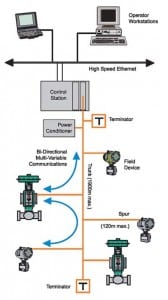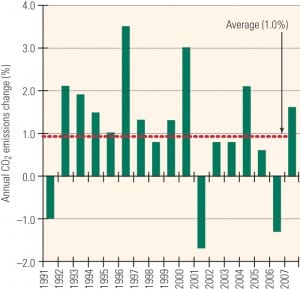Latest
-
Coal
A Fieldbus Primer
Many automation engineers are coming face to face with real fieldbus applications for the first time. Fieldbus (the use of digital communications networks for distributed instrumentation and control) is a wonderful technology with many benefits, but fieldbus installation requires some additional considerations over and above normal 4-20 mA projects. In this article, I present some of those issues and show you how to deal with them.
-
Coal
Debate on the Cost of Carbon Control Begins
Senate legislation to cap U.S. greenhouse gas (GHG) emissions beginning in 2012 would have generally modest cost impacts on the national economy, leading to reductions in gross domestic product (GDP) by 2030 that range from 0.2%, or $444 billion, to 0.6%, or $1.3 trillion, according to an Energy Information Administration analysis.
But the analysis, which concluded that the costs of the legislation would depend largely on the availability of advanced nuclear and coal-fired generation technologies, drew criticism from Republicans for its projection of a massive buildup of nuclear generation.
-
Coal
Designing Material-Handling Systems for FGD Projects
Reducing NOx, SO2, and other air pollutants continues to be a challenge for the power generation industry. The technologies are well-understood, but the devil is always in the details, especially when a complex treatment system is retrofitted to an existing plant.
The most common method for reducing SO2 from plant emissions is the conventional lime- and limestone-based flue gas desulfurization (FGD) system. Material-handling systems for limestone and gypsum present specific challenges and opportunities that differ from those of coal-handling systems. This article looks at factors to consider before and during the design of a new material-handling system. The choices you make about these many variables will determine the cost and longevity of your system.
-
Commentary
Wishful Thinking
By Editor-in-Chief Dr. Robert Peltier, PE
Zhou Dadi, director general (emeritus) of the Energy Research Institute at China’s National Development and Reform Commission, recently spoke at a panel discussion sponsored by the Carnegie Endowment for International Peace. Zhou boasted that China has set aggressive short-term goals for improved energy efficiency and that his country understands that it needs to make significant reductions of CO2 in the future. This is a remarkable statement considering that China installed over 100 GW of new coal-fired generation in 2006 and another 75 GW in 2007. -
Coal
From Plan to Plant: The Struggle to Make “Clean Coal” a Reality
In early June, New York Gov. David Paterson proclaimed that his state would commit $6 million to buttress a carbon capture and sequestration (CCS) viability study for the development of a new 50-MW clean coal plant in Jamestown, in western New York. The circulating fluidized-bed (CFB) project, which would use pure oxygen to combust coal and subsequently capture and sequester 90% of emitted carbon dioxide (CO2), would be “the first of its kind in the world” and could potentially enable New York firms to launch exports of the technology worldwide, Paterson promised.
-
Commentary
Obama: Big Oil’s Best Buddy
By Kennedy Maize
It’s counterintuitive. But it now appears that Democratic presidential (almost) nominee Barack Obama is Big Oil’s best friend in Washington. -
The fallout from shifting nuclear alliances
—Dr. Robert Peltier, PE Editor-in-Chief In the late 1880s’ “War of the Currents,” Thomas Edison used every outrageous tactic to promote direct current (DC) as superior to alternating current (AC), which was championed by George Westinghouse. Edison’s most overblown public display was the electrocution of Topsy, a Coney Island circus elephant, to prove the dangers […]
-
Coal
Global Monitor (June 2008)
Artificial photosynthesis for solar power? / Poultry litter to fuel 55-MW N.C. plan / First fuel cell-powered plane takes flight / First HTS transmission cable energized / PTC powers wind power industry / Renewing Greensburg / GAO deems coal-to-gas switch impractical / Assessing the Congo River’s power potential / POWER digest / Corrections
-
-
Legal & Regulatory
The green trade-off
By Steven F. Greenwald and Jeffrey P. Gray These should be good times for environmentalists who focus on “green” energy policy. More than half the U.S. states have adopted renewable portfolio standards (RPS) that require utilities to meet specific renewable generation targets, and many are considering additional actions to reduce greenhouse gas (GHG) emissions. Such […]






